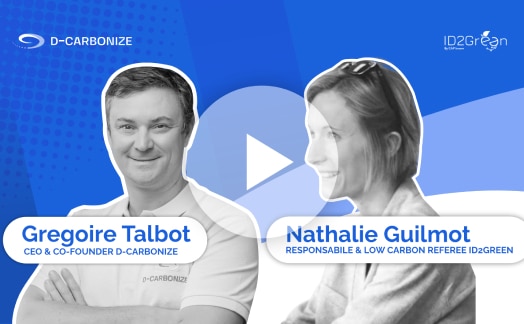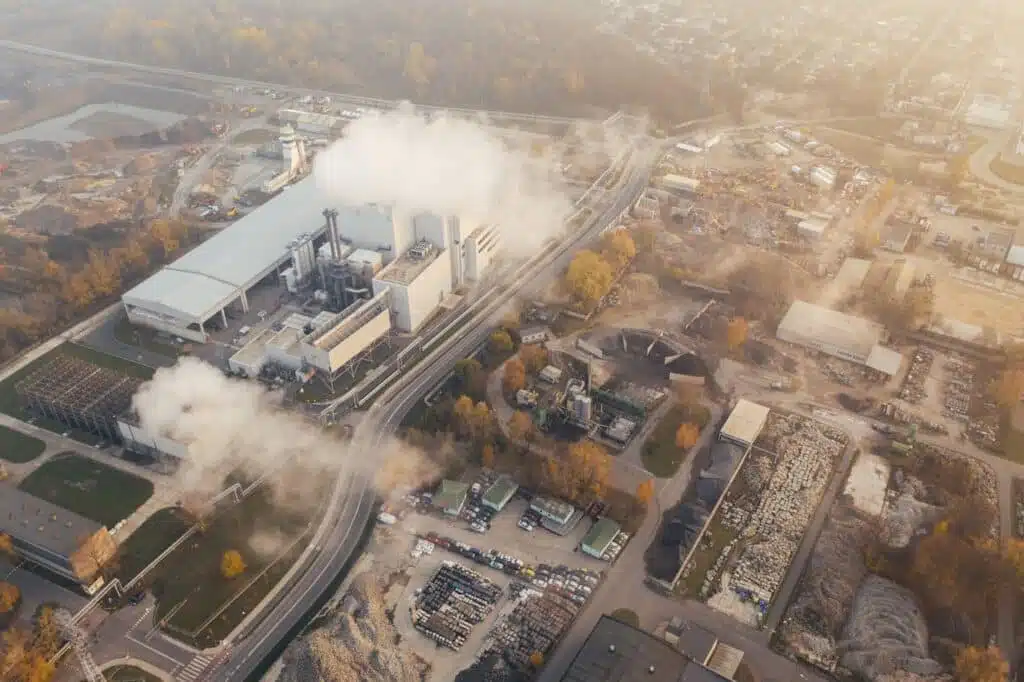
Responding to a call for tenders has become, in 2025, an essential exercise for companies wishing to expand and secure new contracts, whether in the public or private sectors. but faced with increasing competition and increasingly precise requirements, it is no longer enough to offer a good price. you must demonstrate your value and stand out based on differentiating criteria.
This practical guide guides you through every step of the process: from identifying opportunities to submitting your offer, including analyzing criteria, drafting the brief, and taking into account regulatory trends. whether you are an SME, a mid-sized company, or an experienced contractor, you will find concrete advice here for successfully responding to your next call for tenders.
Understanding how a call for tenders works
What is a call for tenders?
A call for tenders is a procedure used by a public or private buyer to select a service provider capable of meeting a need, under specific conditions of quality, price, and deadline. the objective is to put several companies in competition with each other in order to select the one best suited to fulfill a given contract, in complete transparency and according to fair criteria.
In the public sector, calls for tenders are governed by strict regulations, which ensure equal access to public procurement. they apply to all types of services:
- works,
- supplies,
- services,
- intellectual services.
In france, the public procurement code defines the applicable rules. in belgium, public procurement legislation applies. companies must therefore comply with specific conditions, such as the submission of administrative, technical, and financial documents within specified deadlines.
In the private sector, the procedure is more flexible but generally follows a similar process. calls for tenders allow the issuing company to compare several proposals before signing a contract.
The different types of calls for tenders
Calls for tenders are structured around several types of procedures, defined primarily by the estimated value of the contract, the nature of the buyer (public or private), and the regulations in force. understanding the different types of calls for tenders is essential for adapting your response strategy.
In the public sector, three main categories can be distinguished:
- Open call for tenders: any company can submit a bid. this is the most transparent and competitive procedure.
- Restricted call for tenders: only companies preselected after an initial phase can submit a bid. this limits the number of applications and guarantees an initial level of quality.
- Adapted procedure (MAPA in france): used for contracts below certain european thresholds, it offers greater flexibility to the public buyer while remaining governed by the public procurement code.
In belgium, similar procedures exist, such as the negotiated procedure with or without advertising, or the competitive procedure with negotiation, which is increasingly used to promote innovation and sustainable solutions.
In the private sector, the rules are more flexible, but companies often adopt a similar approach, with limited consultations or calls for applications by invitation.
Your free carbon footrpint awaits!
Sign up for a free trial, answer 20 questions, and receive your first carbon footprint assessment!
The key atteps to effectively responding to a call for tenders
Step 1: identify the right calls
The first step to successfully submitting a call for tenders is knowing how to identify opportunities that truly match your business. too often, companies waste valuable time responding to poorly targeted requests, with little chance of success. in recent years, the number of publication platforms has multiplied, and effective business intelligence has become a real competitive advantage.
For public procurement, several tools allow you to consult current calls for tenders. in france, the marchés publics.gouv.fr website remains the reference, while in belgium, the e-procurement platform brings together most of the requests for tenders. other aggregators such as BOAMP, france marchés, marchésonline, or regional platforms can also be useful. at the european level, the TED (tenders electronic daily) database centralizes large-scale calls for tenders.
For private markets, prospecting involves other channels: professional networks, sector-specific calls for projects, specialized platforms, or even direct relationships with clients.
The ideal is to set up personalized monitoring, with automatic alerts based on keywords, geographic areas, and areas of expertise. this strategy allows you to remain responsive and focus your efforts on projects where you have a real competitive advantage.
Step 2: analyze the selection criteria
Once a call for tenders has been identified, the next step is to analyze the selection criteria in detail. this phase allows you to assess the real chances of success, adjust the response, and highlight the best arguments. in 2025, both public and private buyers are paying increasing attention to the overall quality of the offer, well beyond price alone.
The selection criteria are always specified in the consultation rules or the notice of call for competition. they generally fall into two main categories:
- Eligibility criteria, which concern administrative documents and the company’s legal, technical, and financial capacity.
- Award criteria, which are used to select eligible bids based on a weighted scoring grid.
These frequently include:
- The technical merit of the bid (quality of the method, human and material resources, deadlines);
- The price or overall cost;
- CSR commitments and environmental initiatives, which are now major criteria in many calls for tenders.
Thus, presenting a clear and up-to-date carbon footprint can strengthen your position in markets that include an environmental dimension. some calls for tenders allocate up to 20% of the final score to criteria related to the ecological transition. understanding this weighting allows you to develop a targeted and effective response.
Step 3: prepare your response package
Preparing a response package for a call for tenders is a strategic step that requires rigor, organization, and anticipation. in 2025, client expectations are high: they are looking for reliable, responsive, and committed service providers. your package must therefore reflect both your professionalism and your ability to precisely meet the expressed need.
A complete package generally consists of several mandatory elements, including:
- Administrative forms (DC1, DC2, DUME, or equivalents depending on the country);
- Legal certificates (URSSAF, taxes, insurance, social security certificates, etc.);
- Recent and relevant references, illustrating your expertise in similar projects;
- And above all, the technical brief, the heart of the package, in which you detail your method, resources, deadlines, quality commitments, etc.
Furthermore, the presentation of your package is taken into account. thus, a well-structured, clear, and error-free package inspires greater confidence. also consider adapting your response to the rating criteria identified in advance and highlighting your differentiating elements.
Successfully writing your technical brief
The technical brief is the central element of your response to a call for tenders. it demonstrates your understanding of the need, the quality of your methodology, your human and material resources, and your concrete commitments. in 2025, clients expect a brief that is clear, personalized, and focused on the added value you provide.
To successfully complete your technical brief, start by analyzing in detail the expectations mentioned in the specifications or the tendering rules. each criterion must be addressed specifically. a good brief outline generally includes:
- A presentation of the company and its similar references;
- The proposed methodology to deliver the service;
- The technical and human resources mobilized;
- The execution schedule, deadlines, and deliverables;
- Quality, safety, and environmental commitments;
- Useful appendices: certifications, environmental assessments, cvs, technical data sheets, etc.
When writing your technical brief, be sure to adopt a professional and fluent tone and avoid vague or overly generic language. personalize each brief based on the client’s context and priorities to maximize your chances.
Carbon footprint: a decisive asset when responding to a call for tenders
Why include a carbon footprint in your call for tenders response?
In 2025, environmental criteria will play an increasingly important role in calls for tenders, whether public or private. including a carbon footprint in your response is no longer a simple marketing tool, but a real competitive advantage. faced with increasingly stringent requirements for social responsibility, buyers expect service providers to make a concrete commitment to the ecological transition.
Thus, presenting a carbon footprint demonstrates that your company understands and controls its environmental impact, and that it is capable of rigorously quantifying it. it is a guarantee of reliability and transparency. carrying out a carbon assessment can help you meet a specific sustainability commitment criterion, or even earn decisive points in the final evaluation.
In some public procurement markets, particularly in france and belgium, specifications now require you to provide justification for your actions to reduce emissions. having already carried out a carbon assessment not only allows you to respond quickly to this request, but also to differentiate yourself from the competition.
Finally, including a carbon assessment in your technical brief reinforces your image as a responsible company, in line with current challenges. this inspires confidence and can make a difference compared to a technically equivalent competitor without a formal environmental commitment.
How to carry out a carbon assessment as part of a call for tenders?
Carrying out a carbon assessment can seem complex at first, especially given the sometimes tight deadlines involved in responding to a call for tenders. however, accessible tools and simplified methodologies allow companies, even small ones, to produce a clear and structured carbon assessment quickly.
The first step is to define the scope of the assessment. for a call for tenders, it is often relevant to focus on the direct and indirect emissions linked to the requested service: travel, energy consumption, material use, logistics, etc. it is also possible to integrate broader data (the company’s overall performance) to enhance an already implemented environmental strategy.
Next, you must collect the necessary data (invoices, distances traveled, volumes consumed), then process it using a suitable tool. specific software such as d-carbonize simplifies this step by automating part of the calculation, providing up-to-date emission factors, and generating a summary report that can be easily integrated into a technical brief.
Finally, it is essential to showcase the results by explaining your approach, your emission reduction choices, and your future commitments. this transparency reassures buyers and positions you as a proactive partner, capable of combining performance and environmental responsibility. thus, a carbon footprint is a major strategic asset for winning a call for tenders in 2025.
How to decarbonize your company ?
Enter your email address and access immediately our 30-minute webinar. discover our experts' strategic advice for decarbonizing your business.
Anticipating regulatory changes and 2025 trends
Effectively responding to a call for tenders in 2025 also means anticipating regulatory changes and new market expectations. the rules governing public and private procurement are evolving rapidly, particularly with regard to environmental, social, and digital aspects. to remain competitive, it is essential to stay informed and adapt your response strategy accordingly.
In both france and belgium, the latest public procurement reforms are strengthening the consideration of CSR criteria, particularly commitments to the ecological transition. environmental criteria are increasingly mandatory, and their weighting can represent up to 30% of the final score in certain sectors. reducing greenhouse gas emissions, analyzing product life cycles, and using sustainable materials are all factors that can now make a difference.
Furthermore, the digitization of procedures has become widespread: companies must be ready to respond quickly online, with standardized documents, electronically signed, and submitted to official platforms. proper preparation and active monitoring are therefore essential.
Checklist: 10 steps to a successful call for tenders
To maximize your chances of success, here are the 10 key steps to follow when responding to a call for tenders:
- Implement effective monitoring to identify relevant calls for tender (by sector, geographic area, keywords).
- Carefully read the tender documents (RC, CCAP, CCTP, etc.) to fully understand expectations.
- Analyze the selection and scoring criteria, and assess the feasibility of the project for your organization.
- Create or update your administrative file (forms, certificates, and certifications).
- Define your response strategy: strengths to highlight, differentiating angles, CSR elements.
- Write a personalized, clear, and structured technical brief directly linked to the criteria.
- Include a carbon footprint or environmental commitments if the context warrants.
- Have the file reviewed by a third party to avoid errors, inconsistencies, or omissions.
- Submit the bid on time and via the appropriate platform, in compliance with the required formats.
- Provide post-filing follow-up: alert on results, analysis in the event of rejection, preparation for upcoming markets.





